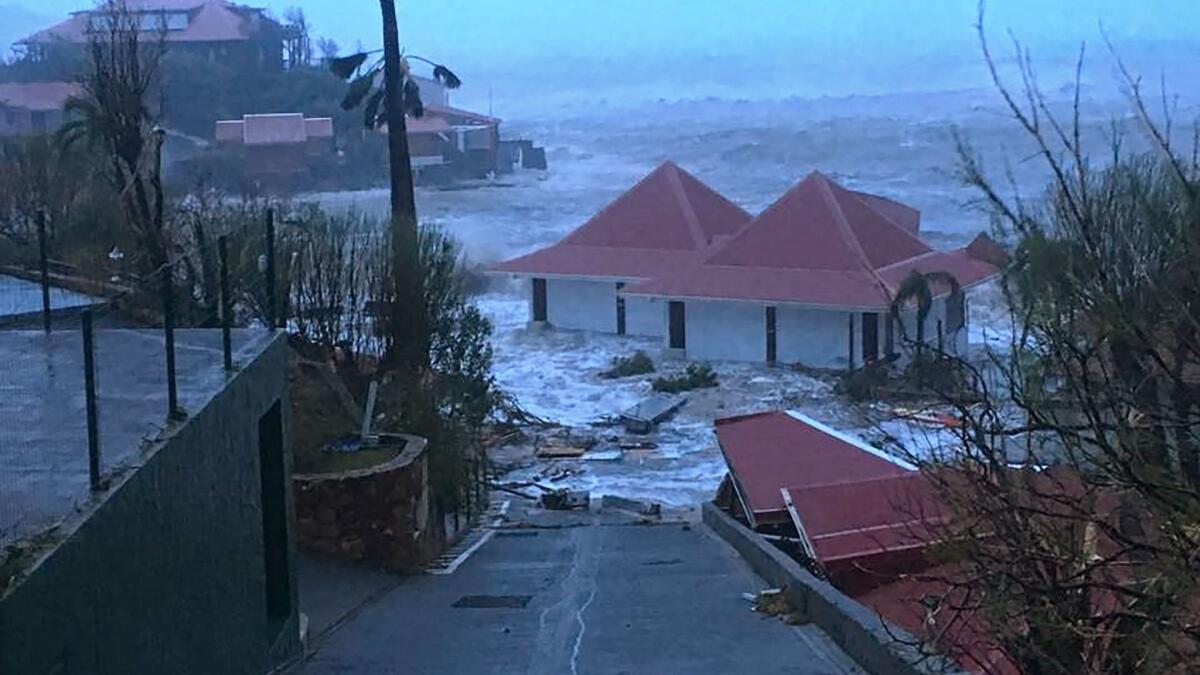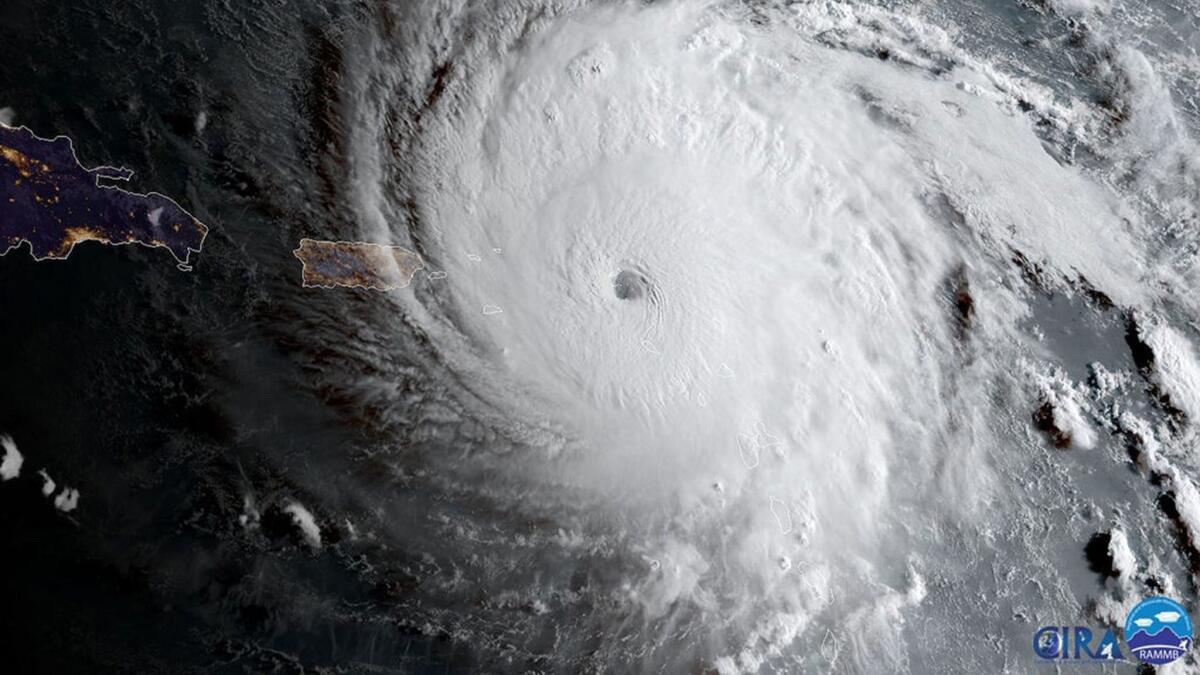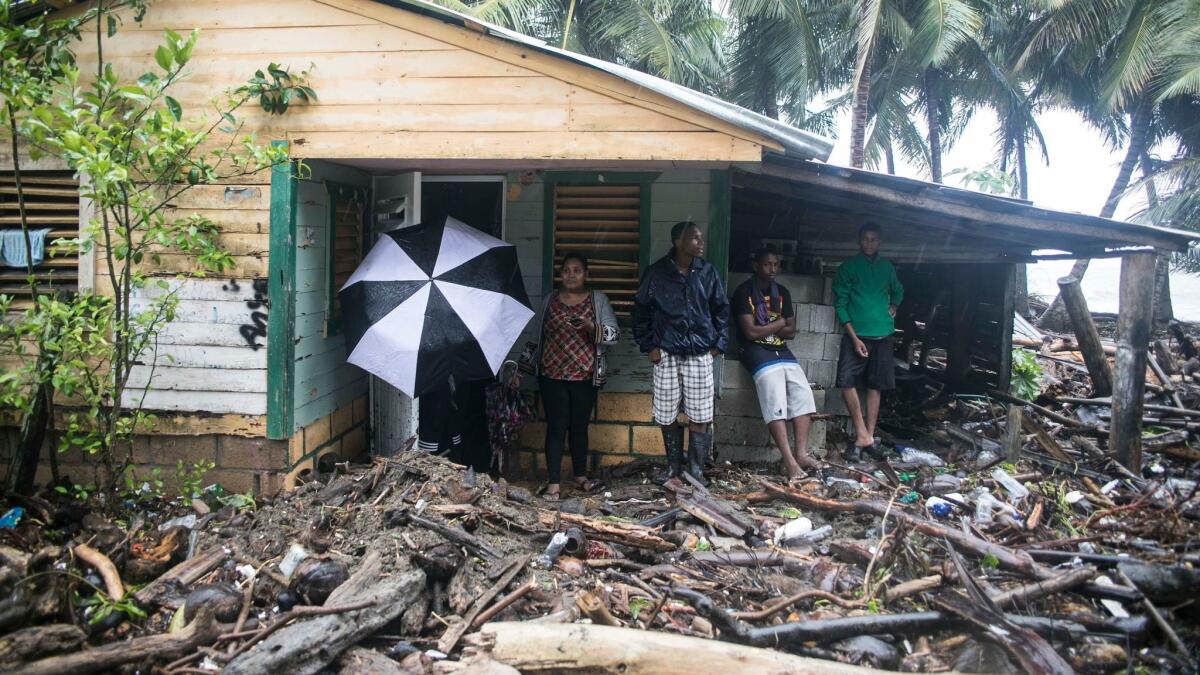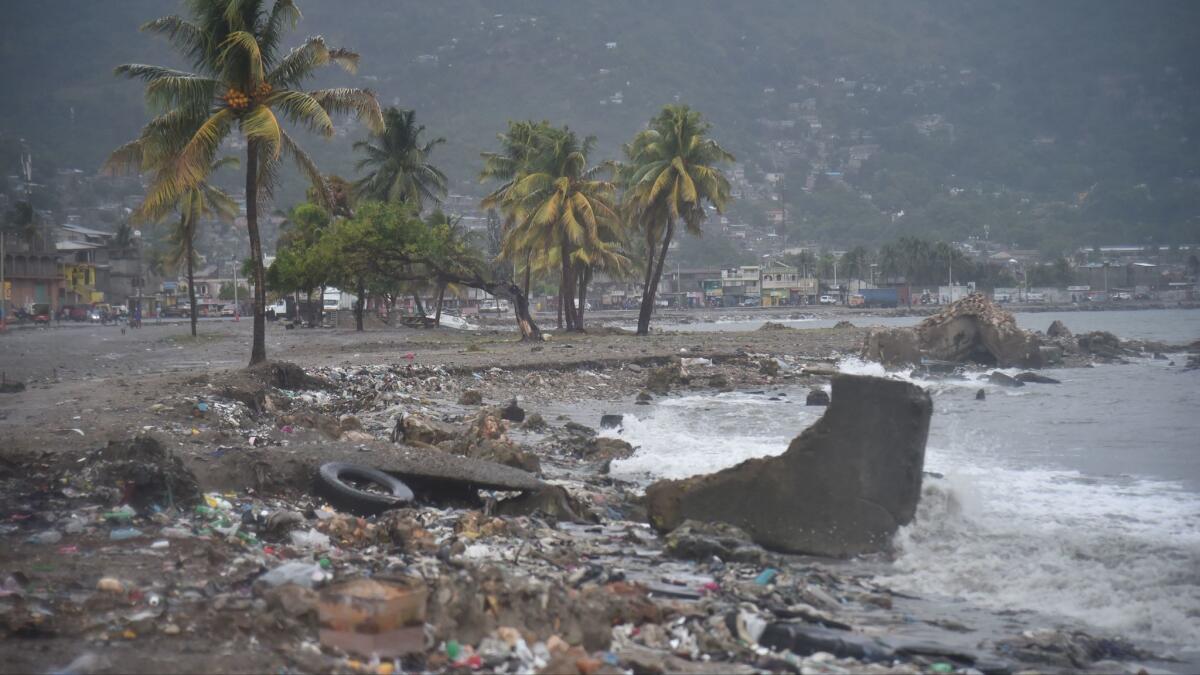A look at the Caribbean islands Hurricane Irma is turning into a checkerboard of disaster
- Share via
As the strongest hurricane on record headed toward South Florida, it first had to get past several small Caribbean nations.
By Thursday, some had already been hit and badly damaged. Many of these nations were expected to need relief and assistance from the international community.
Here is a briefing on some of the island nations in Irma’s path:
Antigua and Barbuda
They are sister islands separated by about 28 miles. Antigua has around 80,000 people, while Barbuda has just under 2,000. The nation is part of the former British Empire and gained its independence in 1981. The islands thrive on tourism and are known for their resorts, pristine beaches and rain forests. Irma struck Barbuda on Wednesday, damaging at least 95% of structures. One person, a 2-year-old, was confirmed dead.

St. Maarten/St. Martin
Located around 150 miles southeast of Puerto Rico, the island was originally settled by Arawak natives and later passed among Holland, England, France and Spain. In 1648, it was peacefully divided between Holland and France to become two sovereign nations, the Dutch St. Maarten and the French St. Martin. English is widely spoken on the island, but the official language is Dutch in St. Maarten and French in St. Martin. French Creole, Spanish and Papiamento are also spoken. About 41,000 people live on the Dutch side and 36,000 on the French side. Irma has wrought devastation on the island nations, where there were reports of at least eight deaths.

St. Barthelemy
Commonly known as St. Barts or St. Barths, the island is a legal French province. Its official website says the island was discovered by Christopher Columbus in 1493 and controlled by the French in 1648 until 1784, when it was sold to Sweden. In 1877, France purchased the island back. In 1946, it was placed under the administration of Guadeloupe. Residents voted to secede from Guadeloupe in 2003, and in 2007 the island became a so-called “French overseas collectivity.” Unlike neighboring islands, African slaves were not brought to St. Barts, and today the population of around 9,000 is predominately white. Irma ripped off rooftops, shut down the electrical grid and sent rivers of debris flowing through streets.

Anguilla
Anguilla is part of the British West Indies. It was colonized by English settlers in 1650 and administered by Britain until the early 19th century, according to the CIA World Fact Book. The territory was incorporated into a single British dependency along with the islands of St. Kitts and Nevis. The inhabitants launched several separation attempts until Anguilla was finally allowed to secede in 1971, and nine years later the nation was recognized as separate British dependency. The island of 17,000 people was reported to have sustained significant structural damage with at least one death when Irma swept through on Wednesday.
Turks and Caicos
Some 575 miles southeast of Miami, this British territory is comprised of seven main islands and about 40 small islands and uninhabited cays, with most of the country’s population of 52,570 living on Providenciales and Grand Turk. Control of the territory changed hands among the Spanish, French and British during the 16th, 17th and 18th centuries. Residents on the low-lying islands, which rely on tourism, fishing and offshore financial services, braced for Irma’s arrival Thursday as the

Dominican Republic
The nation sits next to Haiti on the island of Hispaniola, which was controlled by France, Spain and for a brief period the United States. In 1697, Spain recognized French rule over the western third of the island, which later became Haiti. The remainder of the island, by then known as Santo Domingo, sought independence in 1821 but was conquered and ruled by Haiti for 22 years. The Spanish-speaking Dominican Republic gained its independence in 1844. By Thursday evening, residents of the island of 10.7 million people were huddled in shelters as Irma churned overhead.

Haiti
A slave revolt that erupted in the territory in 1791 led to independence from France 13 years later, with Haiti becoming the world's first black republic. The densely populated, cash-strapped nation is very familiar with deadly storms. Most recently, Hurricane Matthew slammed into the island of 10.6 million people in October 2016, damaging up to 80% of homes and leaving at least 350,000 people in need of immediate aid. The death toll hit at least 1,000, according to tallies by humanitarian workers and local government officials.
Twitter: @AMSimmons1
Sign up for Essential California
The most important California stories and recommendations in your inbox every morning.
You may occasionally receive promotional content from the Los Angeles Times.








